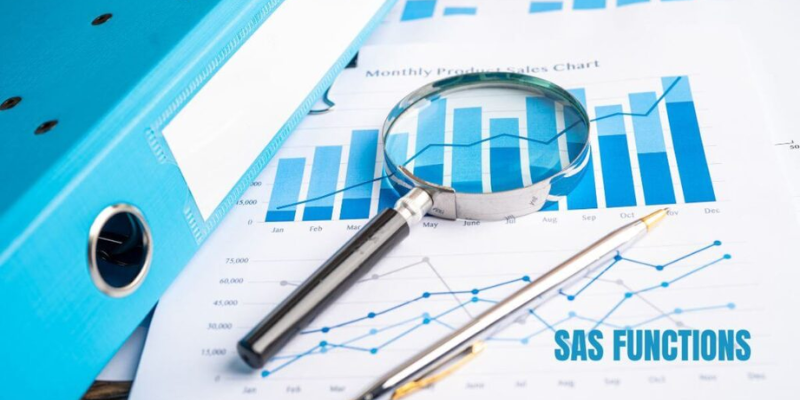SAS (Statistical Analysis System) is a widely used software suite for advanced analytics, business intelligence, data management, and predictive analytics. One of SAS’s core strengths lies in its extensive library of built-in functions, allowing users to easily perform complex data manipulations. SAS Training in Chennai offered by FITA Academy provides comprehensive courses to help individuals master these functions. In this blog, we’ll explore some of the most common SAS functions and how they are used to simplify data processing.
SAS functions are pre-built routines designed to carry out specific tasks, ranging from simple calculations to complex data transformations. These functions are essential for making data analysis more efficient, as they eliminate the need for manual calculations and repetitive coding. Whether working with numerical data, text, or dates, SAS functions can help you achieve your goals more quickly and accurately.
Common SAS Functions
Mathematical Functions
Mathematical functions are among the most frequently used in SAS. These functions handle a variety of operations, including basic arithmetic, rounding, and trigonometry. Common mathematical functions include:
- SUM: Used to add two or more numbers together.
- MEAN: Calculates the average of a set of numbers, providing a quick way to find central tendencies.
- ROUND: Rounds a number to the nearest specified decimal place, which is useful for standardizing numerical data.
- SQRT: Computes the square root of a number, often used in statistical calculations.
These functions are beneficial when you need to perform quick calculations or aggregate data, such as finding the total sales for a period or the average score of a dataset.
Character Functions
Character functions are essential for manipulating and analysing text data in SAS. They allow users to modify, extract, and compare strings, making them invaluable for textual information tasks. Common character functions include:
- SUBSTR: Extracts a portion of a string, useful for isolating specific text parts, such as a first name from a full name.
- UPCASE: Converts all characters in a string to uppercase, ensuring consistency in text data.
- TRIM: Removes trailing spaces from a string, which is important for cleaning up data.
- LENGTH: Determines the number of characters in a string, helping to analyze the structure of textual data.
Character functions are particularly useful for standardizing, cleaning, or analyzing text, such as when processing customer names or product descriptions.
Date and Time Functions
Handling dates and times is a common requirement in data analysis, and SAS provides a variety of functions to make this task easier. Date and time functions help users extract specific parts of a date. They also enable users to calculate the difference between dates and format dates consistently. Common date and time functions include:
- TODAY: Returns the current date, making it easy to timestamp data.
- YEAR: Extracts the year from a date, useful for grouping data by year.
- MDY: Creates a date from given month, day, and year values, facilitating date construction from separate fields.
- INTCK: Calculates the number of intervals (such as days, months, or years) between two dates, essential for age calculations or time-based analysis.
These functions are crucial in any analysis involving temporal data, such as tracking customer activity over time or calculating the duration of events.
SAS functions are powerful tools that significantly enhance the efficiency and accuracy of data analysis. Whether you’re performing mathematical calculations, manipulating text, or working with dates, these functions simplify the process and reduce the likelihood of errors. By mastering these common SAS functions, users can streamline their workflows and focus more on interpreting results rather than managing data. For anyone working in data analytics, understanding and utilizing SAS functions is key to unlocking the full potential of this robust software. Enrolling in a Training Institute in Chennai can provide the expertise and hands-on experience needed to fully leverage SAS functions in your analytics endeavours.
Also Check: Real-World Applications Of SAS Analytics In Business

